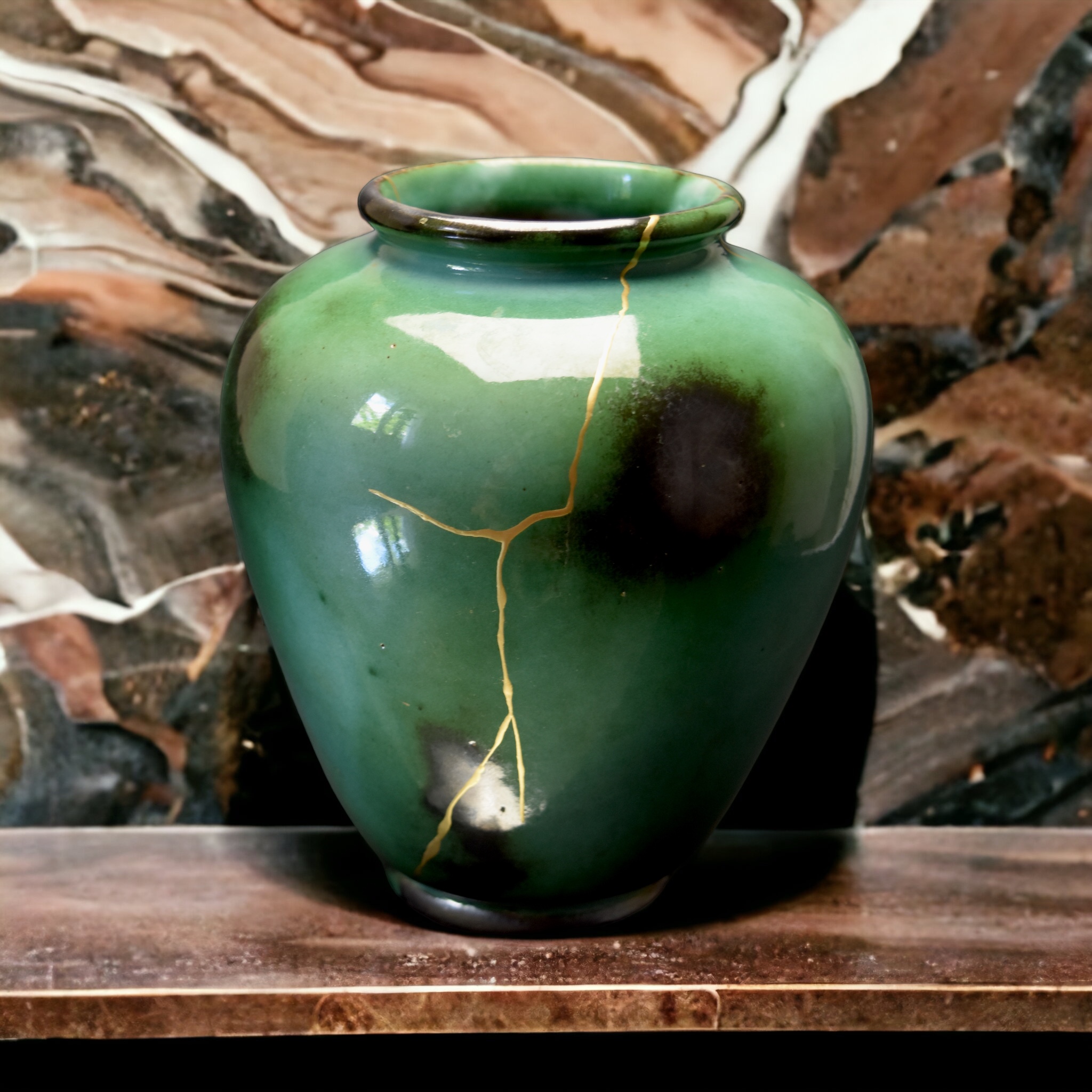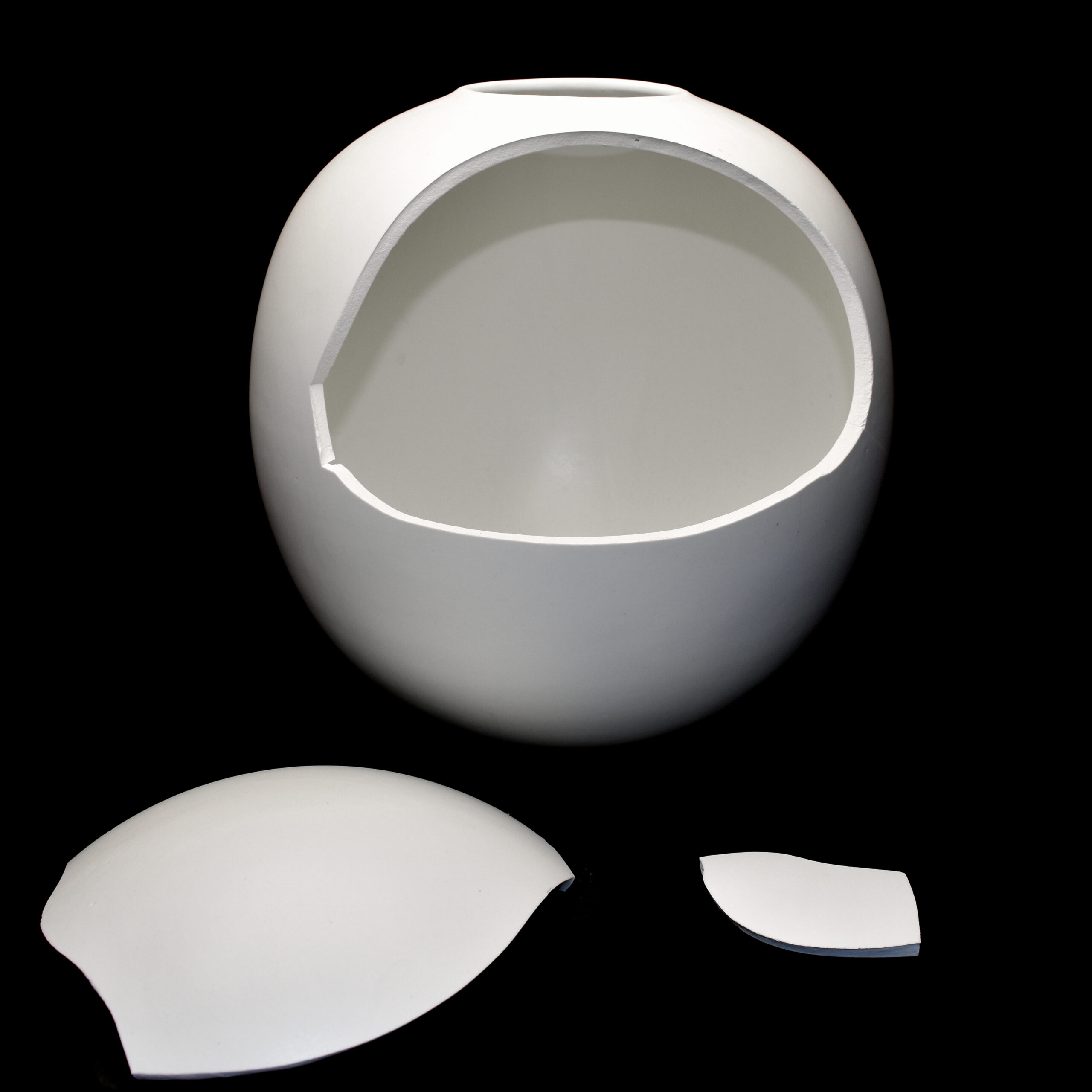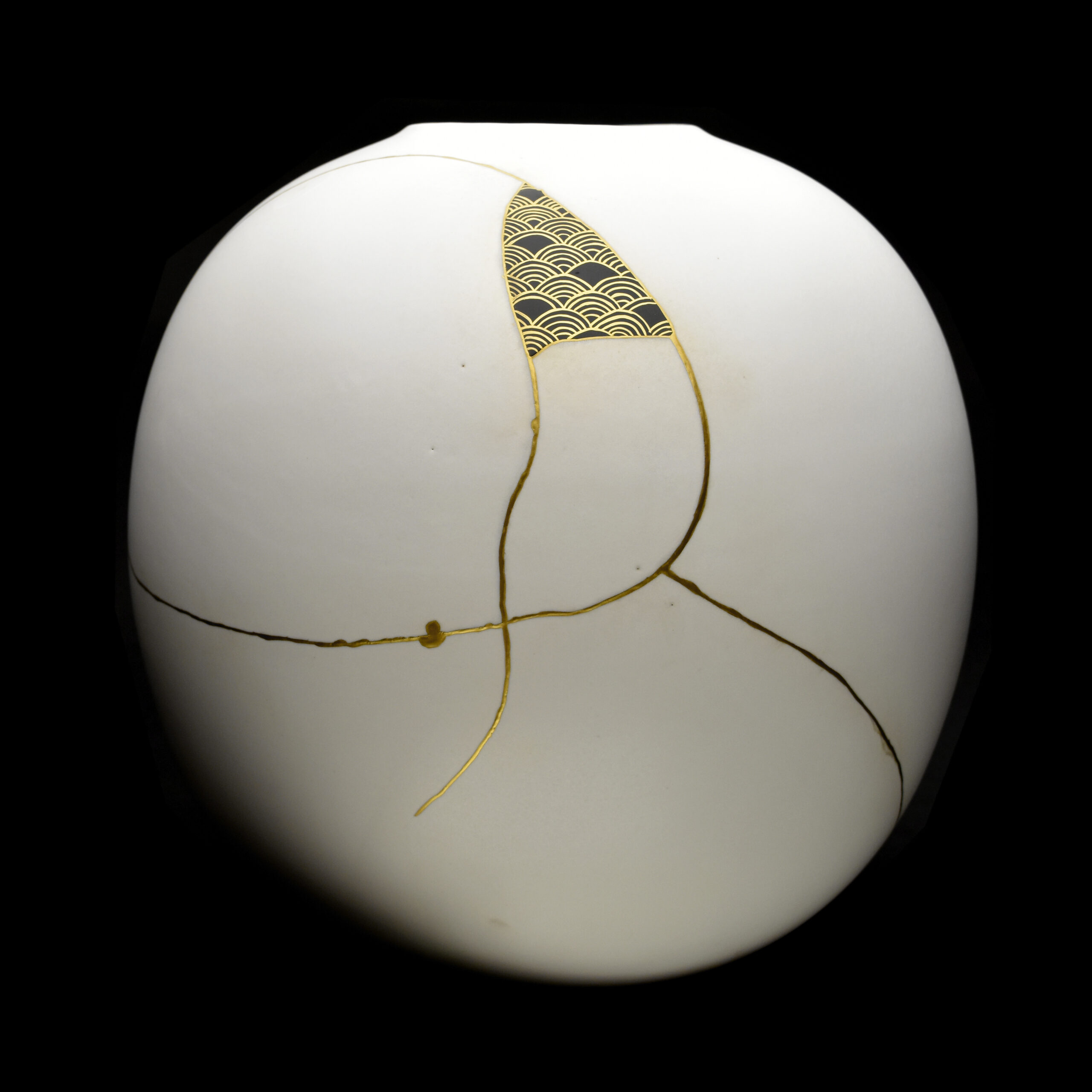Kintsugi, or the Japanese art of repairing broken objects with lacquer and gold powder, teaches us several important lessons about life.
Kintsugi, the art of imperfection
Firstly, it teaches us to accept imperfections. Broken objects are repaired in a way that highlights their cracks, making them unique and precious. This reminds us that imperfections are part of life, and should not be hidden or shamed.
Meissen vase, before and after repair, by Myriam Greff
Kintsugi, the art of embracing change
Secondly, kintsugi teaches us to embrace change. Broken objects are transformed by repair, and often emerge more beautiful and stronger. This reminds us that change is inevitable, and that it can be a positive force.
Porcelain vase repaire with kintsugi and maki-e-naoshi by Myriam Greff
Kintsugi, the art of self-esteem
Thirdly, kintsugi teaches us to give value to experiences. Broken objects are valuable because they have a story. It reminds us that our experiences, even negative ones, build us up and make us stronger. We can become proud of our fragility
 Ugo, sculpture by Myriam Greff
Ugo, sculpture by Myriam Greff
Kintsugi, the art of seeing beauty
Finally, kintsugi teaches us to look for beauty in the seemingly ordinary. Repaired objects are often considered more beautiful than undamaged ones. This reminds us that beauty is often found in simple things.
 Kyo blue vase repaired with kintsugi by Myriam Greff
Kyo blue vase repaired with kintsugi by Myriam Greff
Here are some real-life examples of how kintsugi can inspire us in our daily lives:
If we make a mistake, we can learn to see it as an opportunity to learn and grow.
If we go through a difficult challenge, we can remind ourselves that we’ll come out of it stronger.
If we feel imperfect, we can learn to accept our weaknesses and see them as unique characteristics.
Kintsugi is a philosophy and an art that can help us live a fuller, more meaningful life.
If you’d like to make a gift or offer yourself a symbol of this beautiful philosophy, visit my store by clicking bellow.



